10 garden plants that are easy to grow and keep
Discover 10 garden plants you can grow or buy now as your greenspace comes to life.
This selection of plants not only will transform your garden with an explosion of colour but will also encourage plenty of pollinating wildlife too.
Here is our list of easy to grow and keep 10 garden planters
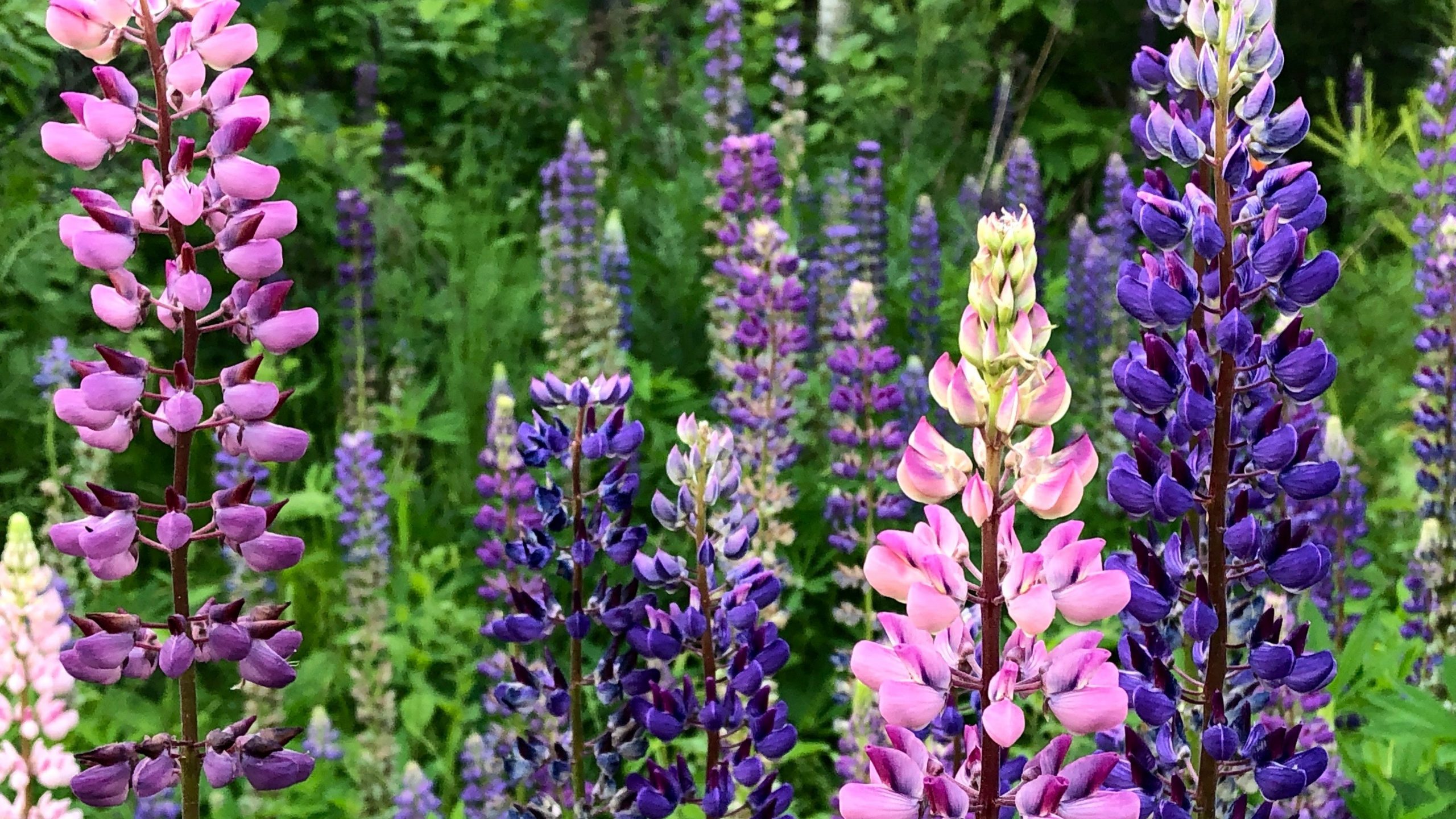
Lupins
Location: Lupins thrive in full sun but can tolerate partial shade. Select a well-drained site with slightly acidic to neutral soil. Avoid areas with heavy clay or overly wet conditions.
Soil : Prepare the soil by adding organic matter such as compost to improve fertility and drainage.
Planting Seeds: Lupins can be sown directly into the ground in early spring or late summer. Soak the seeds overnight before planting to improve germination.
Watering: Water regularly, especially during dry periods and avoid overwatering. Ensure the soil remains moist but not waterlogged. Once established, lupins are relatively drought-tolerant.
Fertilising: Lupins are nitrogen-fixing plants and do not require heavy fertilisation. A light application of a balanced fertiliser in the spring can promote growth. Using a high-nitrogen fertiliser could lead to lots of foliage but fewer flowers.
Maintenance and Pruning: Deadhead spent flowers to encourage more blooms and prevent self-seeding. Cut back the plants to the ground in the autumn after the foliage has died back. This helps to keep the garden tidy and encourages healthy growth in the next season.
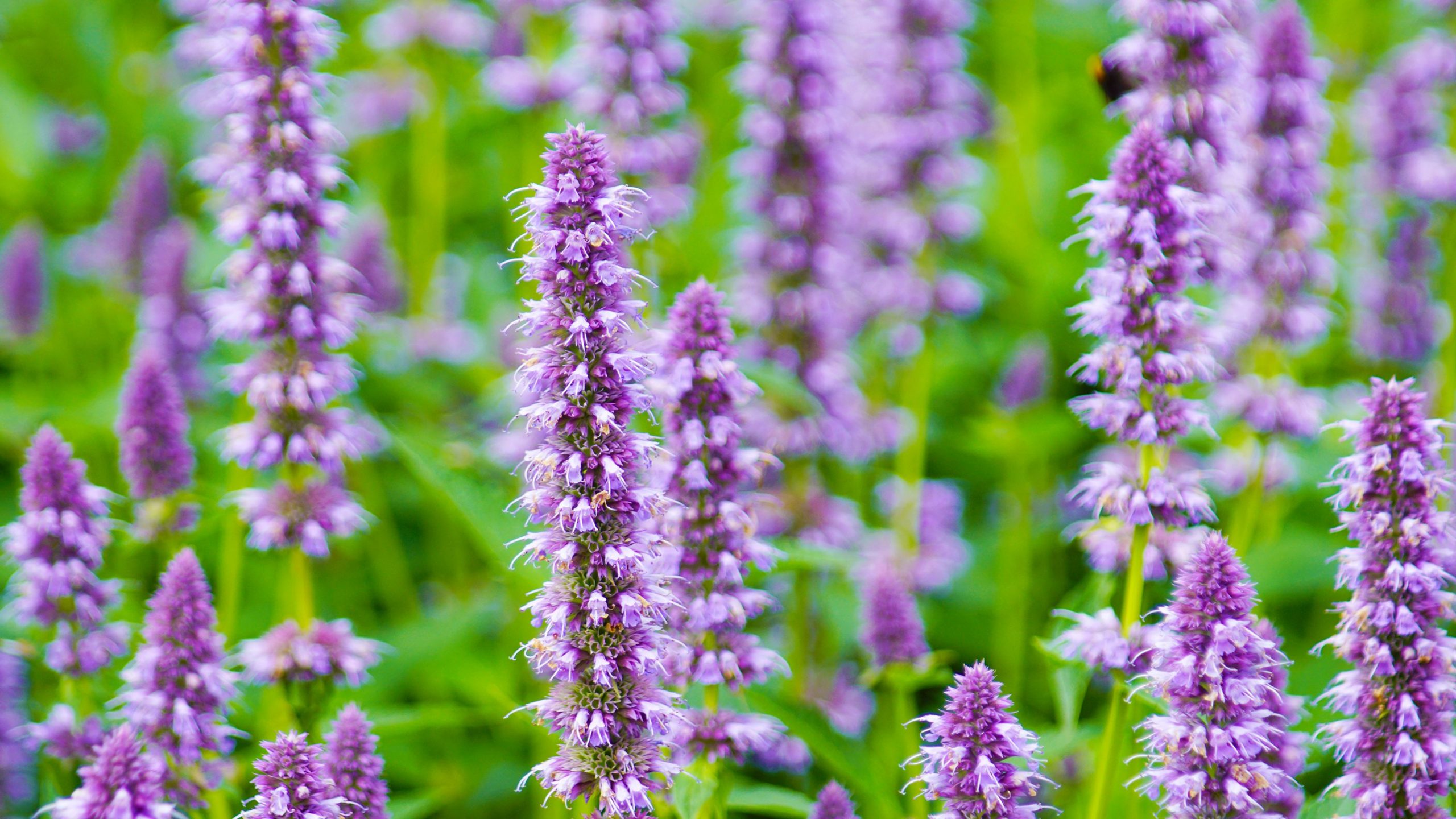
Agastache
Location: Agastache prefers full sun and well-drained soil. Choose a location that receives at least 6-8 hours of sunlight daily and avoid areas with heavy clay or consistently wet soil.
Soil Preparation: Amend the soil with compost or organic matter to improve drainage and fertility. Agastache plants thrive in slightly acidic to neutral soil with a pH range of 6.0 to 7.5.
Planting Seeds or Transplants: Start Agastache seeds indoors 6-8 weeks before the last frost date or sow them directly in the garden after the last frost. Space the plants 12-18 inches apart to allow for adequate air circulation.
Watering: Water the plants regularly, especially during the first growing season to establish a strong root system. Once established, Agastache is drought-tolerant and requires less frequent watering. Water deeply but less oftern, allowing the soil to dry out between watering sessions.
Fertilising: Agastache generally requires minimal fertilisation. Too much fertiliser can lead to excessive foliage and reduced flowering.
Maintenance and Pruning: Deadhead spent flowers to encourage continuous blooming throughout the season. Cut back the plants in late autumn or early spring to remove dead or damaged stems and promote new growth. Agastache is relatively low-maintenance and resistant to pests and diseases, making it an excellent choice for low-care gardens.
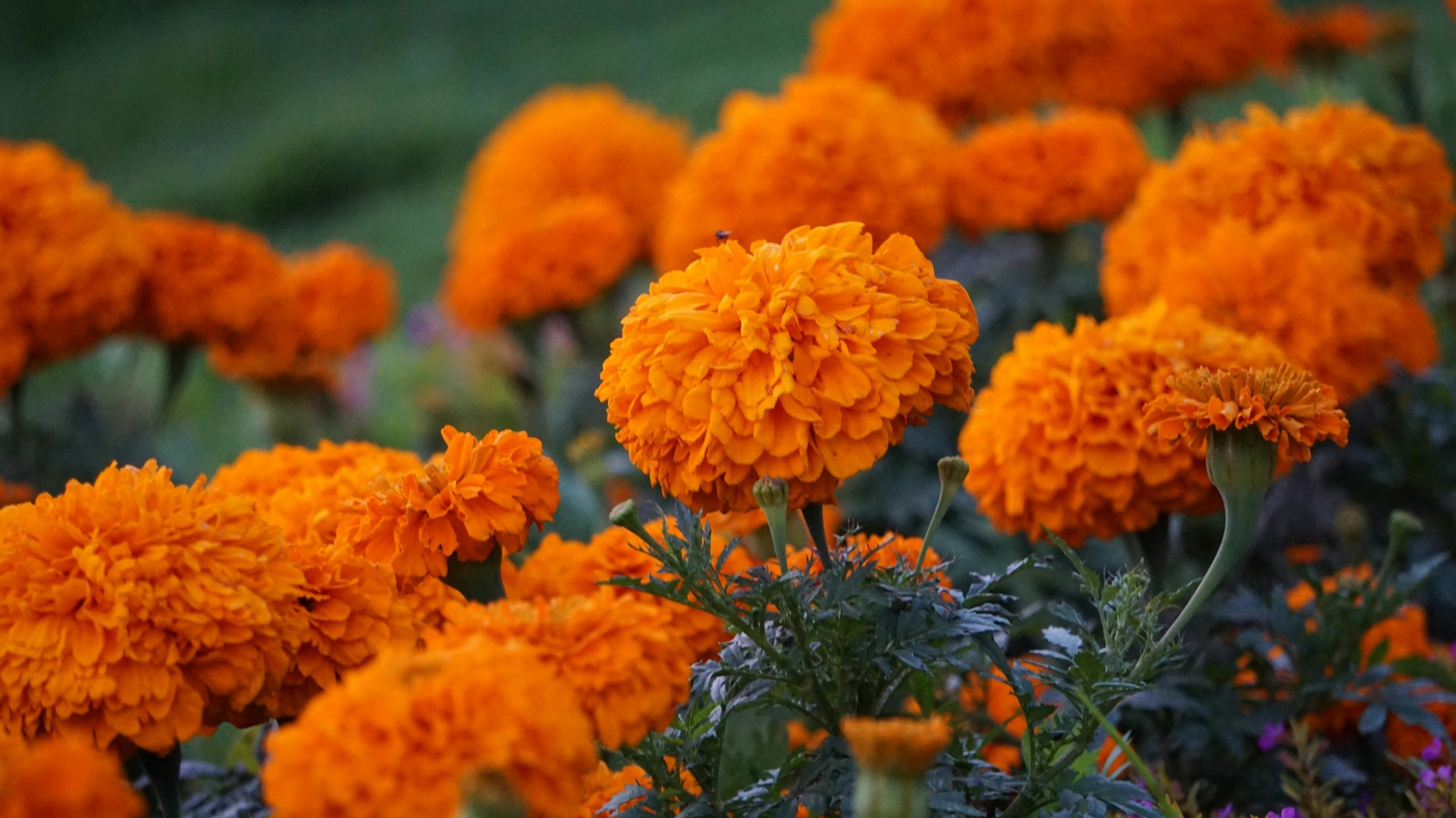
Marigolds
Location: Marigolds thrive in full sun, requiring at least 6 hours of direct sunlight daily. They are adaptable to various soil types but prefer well-drained soil.
Soil Preparation: Prepare the garden bed by incorporating compost or organic matter to improve soil structure and fertility.
Planting Seeds or Transplants: Sow marigold seeds directly into the garden after the last frost or start them indoors 6-8 weeks before the last frost date. Plant transplants once the danger of frost has passed. Space the plants 6-18 inches apart, depending on the variety.
Watering: Water marigolds regularly to keep the soil evenly moist, especially during dry spells. Avoid overwatering as they are susceptible to root rot. Water at the base of the plant to prevent fungal diseases on the foliage.
Maintenance and Pruning: Deadhead spent flowers regularly to encourage continuous blooming and prevent the plants from self-seeding excessively. Remove any diseased or damaged leaves to maintain plant health. Marigolds are generally low-maintenance and can help repel certain garden pests, making them beneficial companion plants.
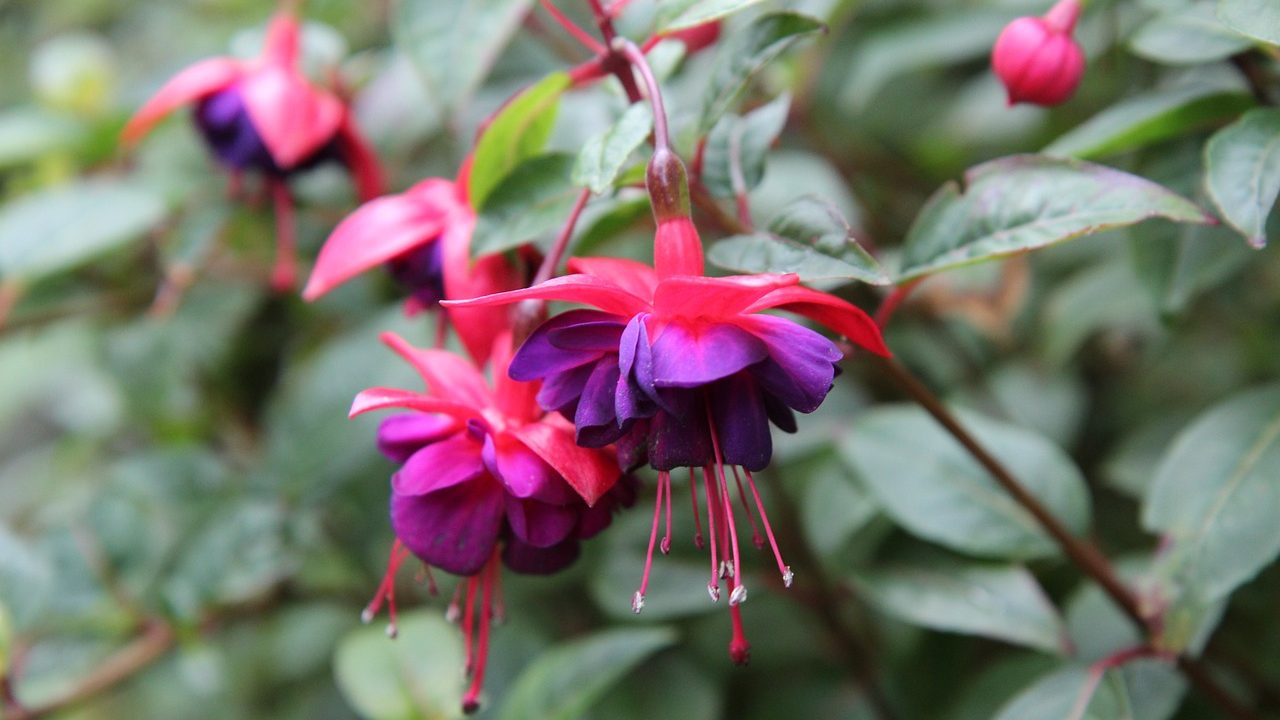
Fuchsia
Location: Fuchsias prefer partial to full shade, making them ideal for gardens with limited direct sunlight. Choose a location that provides protection from intense afternoon sun and strong winds.
Soil Preparation: Ensure the soil is rich, well-drained, and retains moisture. Amend the soil with organic matter such as compost or peat moss to improve its fertility and drainage.
Planting: Plant fuchsias in the garden after the last frost date or in containers that can be moved indoors if necessary. Space the plants 12-18 inches apart to allow for good air circulation. When planting, set the root ball at the same depth it was growing in the pot.
Watering: Fuchsias require consistent moisture, especially during hot weather. Water the plants deeply and regularly, keeping the soil evenly moist but not waterlogged. Container grown fuchsias may need more frequent watering.
Fertilising: Feed fuchsias with a balanced, water-soluble fertiliser every 2-4 weeks during the growing season. Reduce feeding in the autumn to prepare the plants for dormancy.
Maintenance and Pruning: Regularly pinch back the growing tips to encourage bushier growth and more flowers. Remove spent flowers to promote continuous blooming. In late autumn, prune back the plants to maintain shape and remove any dead or diseased branches. For overwintering, bring container-grown fuchsias indoors or protect garden plants with mulch in colder weather.
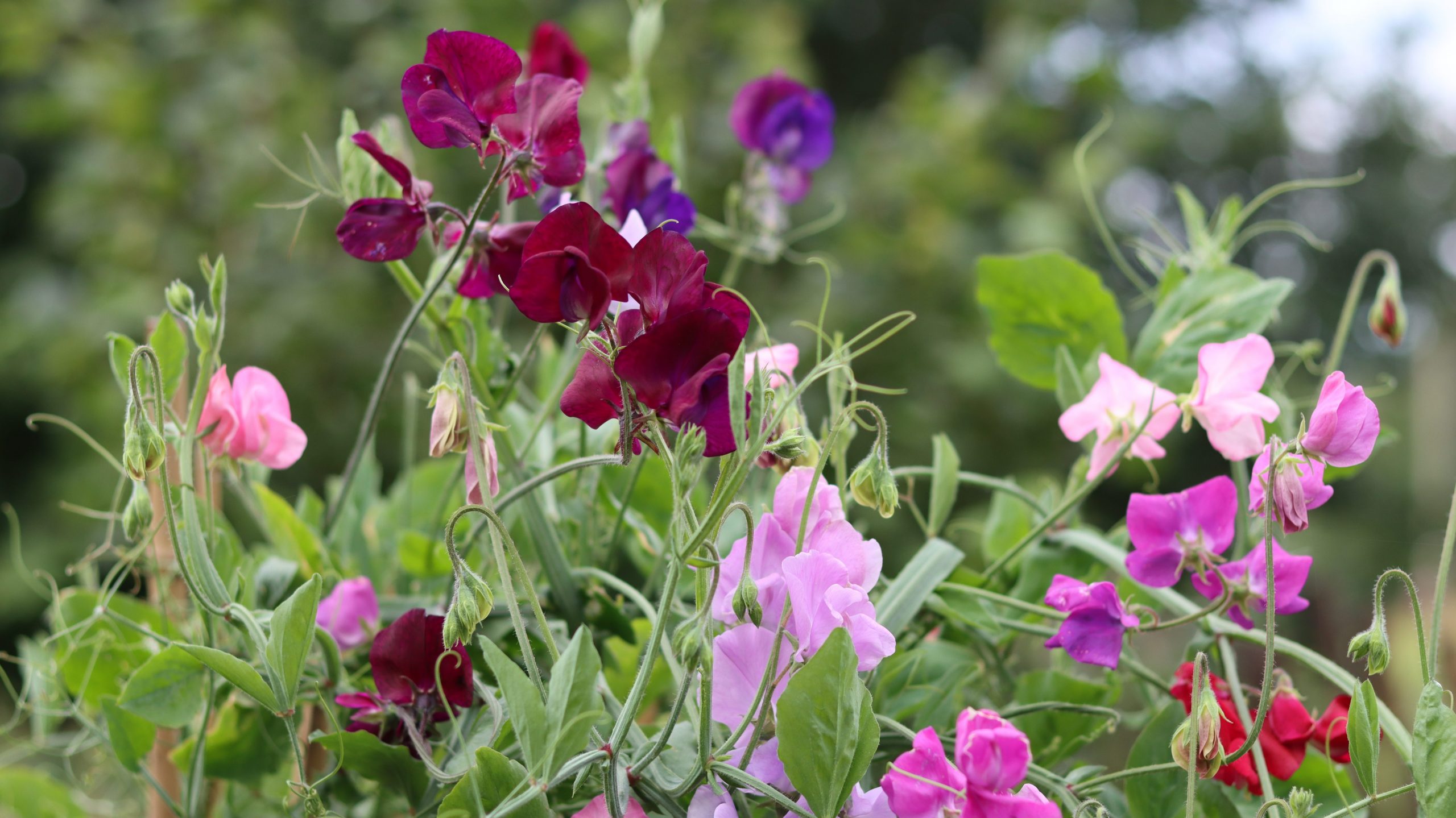
Sweet Pea
Location: Sweet peas like a sunny spot with direct sunlight. To prevent diseases, sweet peas require good air circulation. They don’t like their feet wet so avoid planting in areas with waterlogged soil.
Soil Preparation: Sweet peas thrive in fertile, well-drained soil. Enrich the soil with plenty of organic matter, such as compost or well-rotted manure, to enhance nutrient content and drainage.
Planting Seeds: Sow sweet pea seeds directly in the garden in early spring or late autumn in mild climates. For an earlier start, seeds can be sown indoors 6-8 weeks before the last frost date. Soak the seeds overnight to improve germination. Plant the seeds 1 inch deep and 2-3 inches apart.
Watering: Water sweet peas regularly to keep the soil evenly moist, especially during dry periods. Avoid letting the soil dry out completely, but also prevent waterlogging. Deep watering once a week is usually sufficient, more often during hot, dry spells.
Fertilising: Apply a balanced fertiliser or compost at planting time and feed every 4-6 weeks during.
Support and Maintenance: Most sweet peas are climbing plants and need support such as trellises, netting, or stakes. Install supports at planting time and tie the vines as they grow. Regularly deadhead spent flowers to prolong blooming and prevent the plants from setting seed. To maintain plant health, prune yellowing or diseased foliage.
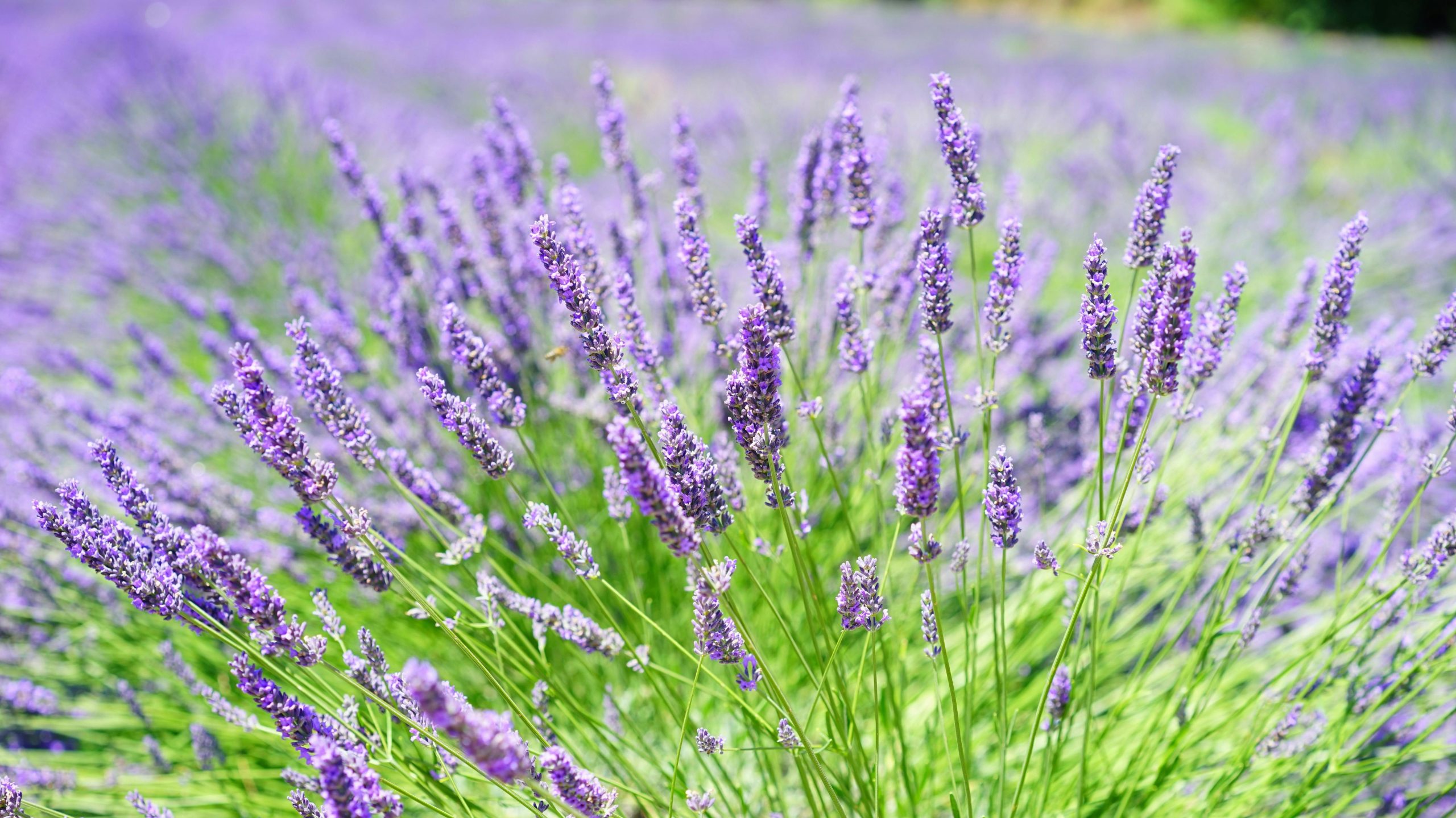
Lavender
Location: Lavender loves full, direct sunlight each day. Choose a location with excellent air circulation and avoid areas with high humidity or excessive shade.
Soil Preparation: Lavender prefers well-drained, sandy, or gravelly soil. Improve heavy clay soils by adding sand, gravel, or organic matter to enhance drainage.
Planting: Plant lavender in the spring after the last frost or in early fall to allow the plants to establish before winter. Space the plants 12-18 inches apart for smaller varieties and up to 36 inches for larger types. Plant at the same depth as in the nursery container.
Watering: Lavender is drought-tolerant once established but needs regular watering during its first growing season. Water deeply but infrequently, allowing the soil to dry out between waterings. Do not overwater.
Fertilising: Lavender does not require lots of fertilisation. A light application of compost or a low-nitrogen fertiliser in the spring is usually enough.
Maintenance and Pruning: Prune lavender annually to maintain its shape and encourage new growth. The best time to prune is after the flowering season, typically in late summer or early fall. Cut back about one-third of the plant’s height, avoiding cutting into the woody stems. Regularly remove spent flowers to promote continuous blooming.
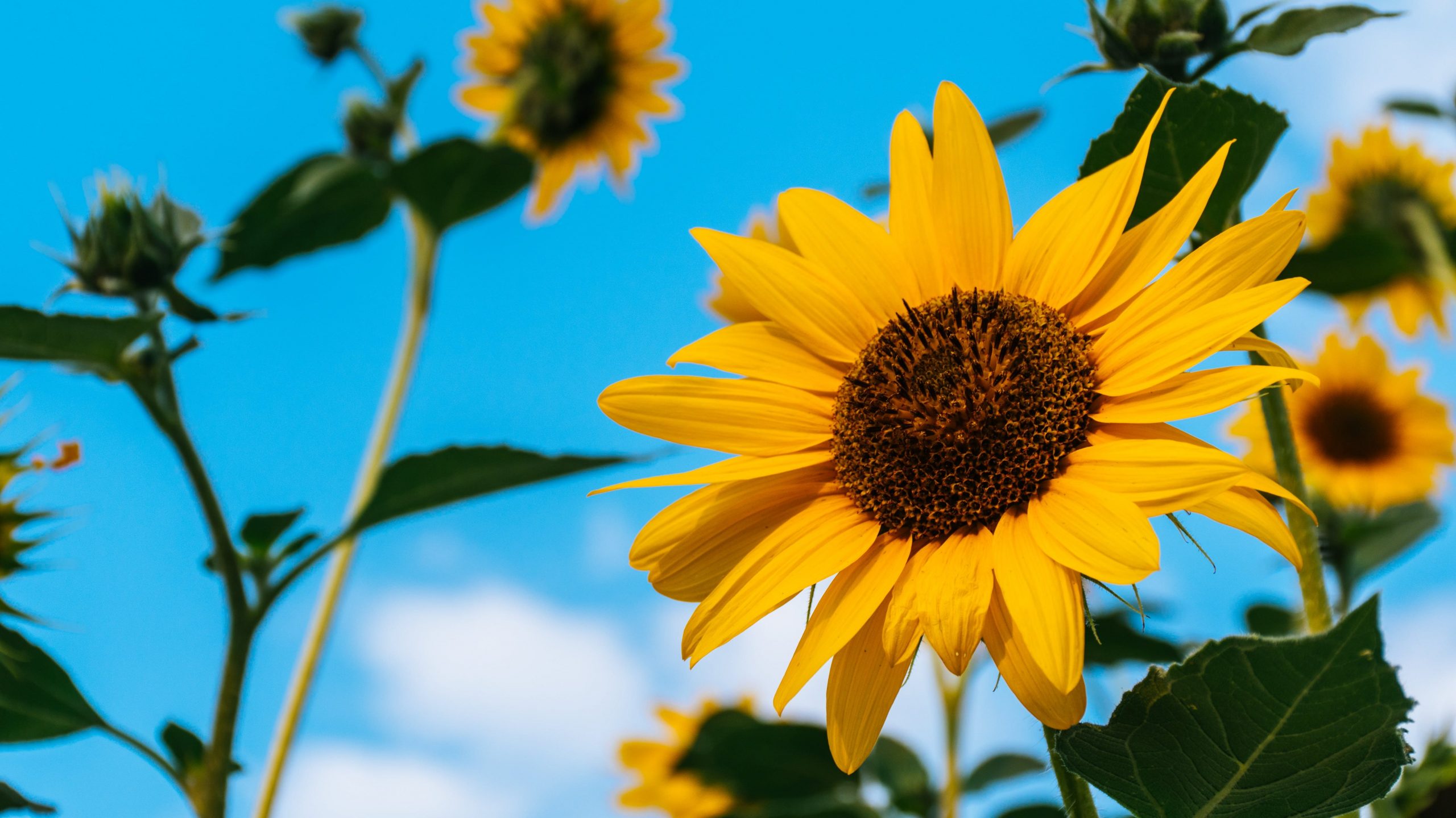
Sunflowers
Location: Sunflowers requiring direct sunlight each day. Select a location with plenty of space as sunflowers can grow tall and wide, and ensure good air circulation to prevent fungal diseases.
Soil Preparation: Sunflowers prefer well-drained, loamy soil. Prepare the soil by incorporating compost or organic matter to improve its fertility and drainage. Sunflowers are heavy feeders, so enriching the soil before planting is beneficial.
Planting Seeds: Sow sunflower seeds directly into the garden after the danger of frost has passed and the soil has warmed. Plant seeds 1 inch deep and 6 inches apart. Thin the seedlings to about 12-18 inches apart once they are a few inches tall to prevent overcrowding and ensure each plant has enough space to grow.
Watering: Water sunflowers deeply but infrequently, ensuring the soil remains moist but not waterlogged. Once established, sunflowers are relatively drought-tolerant but benefit from regular watering during dry periods, especially when they are young and during flowering.
Fertilising: Apply a balanced, slow-release fertiliser at planting time. As sunflowers grow, side-dress with compost or a balanced fertiliser every 4-6 weeks.
Support and Maintenance: Tall sunflower varieties may require staking to support their heavy flower heads and prevent them from toppling over. Regularly check the plants for pests like aphids and beetles, and remove them as needed. Deadhead spent flowers to encourage continuous blooming and prevent self-seeding. After the growing season, harvest the seeds if desired and remove the plant debris to prevent diseases and pests in the following year.
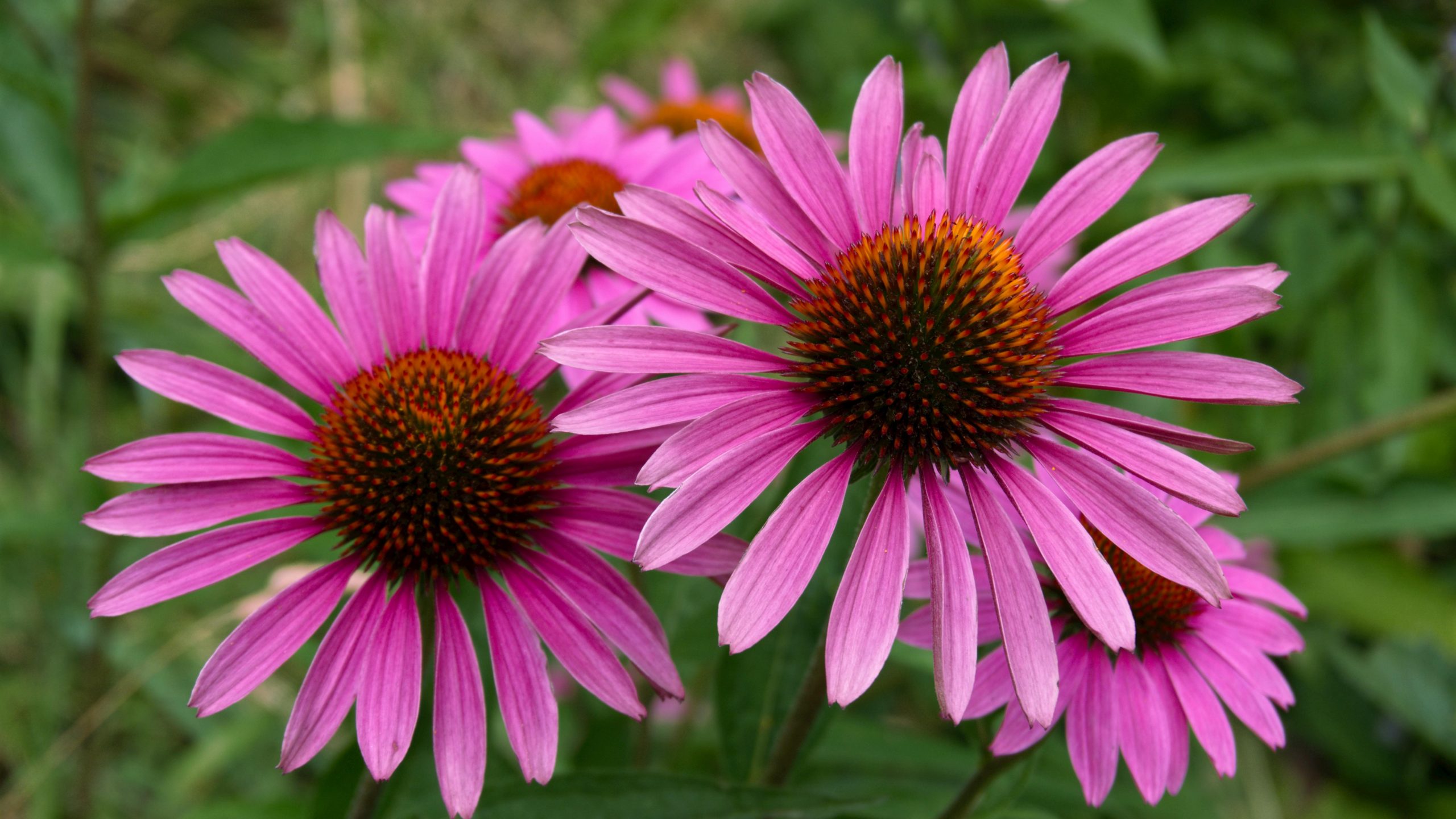
Echinacea
Location: Echinacea, otherwise known as coneflower, love full, direct sunlight daily. They like a well-drained site as echinacea does not tolerate waterlogged soil.
Soil Preparation: Echinacea prefers well-drained, sandy, or loamy soil. Enrich the soil with compost or other organic matter to improve its fertility and drainage.
Planting Seeds or Transplants: Sow echinacea seeds directly into the garden in late autumn or early spring. You can also start them indoors 8-10 weeks before the last frost. Plant out after the danger of frost has passed.
Watering: Water echinacea regularly during the first growing season to establish a deep root system. Once established, it is drought-tolerant and requires less frequent watering. Water deeply but infrequently, allowing the soil to dry out between waterings.
Fertilising: Echinacea does not require much fertilisation. A light application of compost or a balanced, slow-release fertiliser in the spring should be enough.
Maintenance and Pruning: Like other plants, deadhead spent flowers regularly to encourage continuous blooming and prevent self-seeding. In late autumn, cut back the stems to ground level after the plant has died back. Divide clumps every 3-4 years in early spring to maintain plant health and vigor.
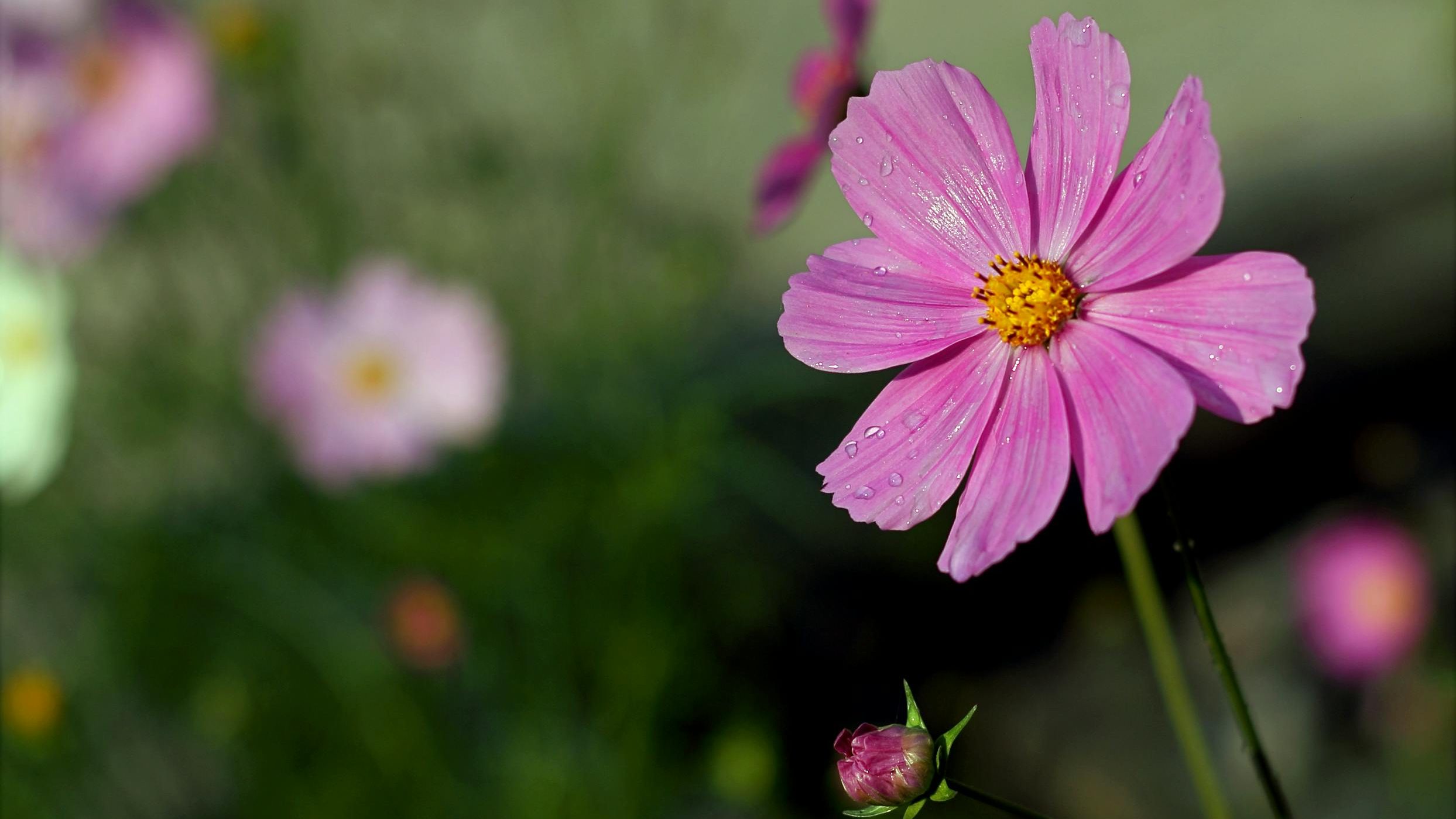
Cosmos
Location: Cosmos thrive in full sun, needing at least 6-8 hours of direct sunlight each day. Choose a site with good air circulation and avoid areas with heavy shade, as this can reduce blooming.
Soil Preparation: Cosmos are adaptable to various soil types but prefer well-drained, moderately fertile soil. They can tolerate poor soil conditions.
Planting Seeds: Sow cosmos seeds directly into the garden after the last frost date. Scatter the seeds lightly and cover them with a thin layer of soil (about 1/4 inch). Space the seeds or thin seedlings to about 12-18 inches apart to allow for good airflow and prevent overcrowding.
Watering: Cosmos are drought-tolerant and prefer dry conditions once established. Water regularly during the initial growth period but reduce frequency once the plants are established. Allow the soil to dry out between watering to prevent root rot and other moisture-related issues.
Fertilising: Cosmos do not require heavy fertilisation. In fact, too much fertiliser can lead to lush foliage with fewer blooms. If necessary, a light application of a balanced fertiliser at planting time is sufficient. They generally thrive with minimal feeding.
Maintenance and Pruning: Deadhead spent flowers regularly to encourage continuous blooming throughout the season. Cosmos can become tall and leggy, so pinch back the stems to promote bushier growth. Support taller varieties with stakes if needed to prevent them from falling over. Over the autumn period, cut back the plants after they have finished blooming.
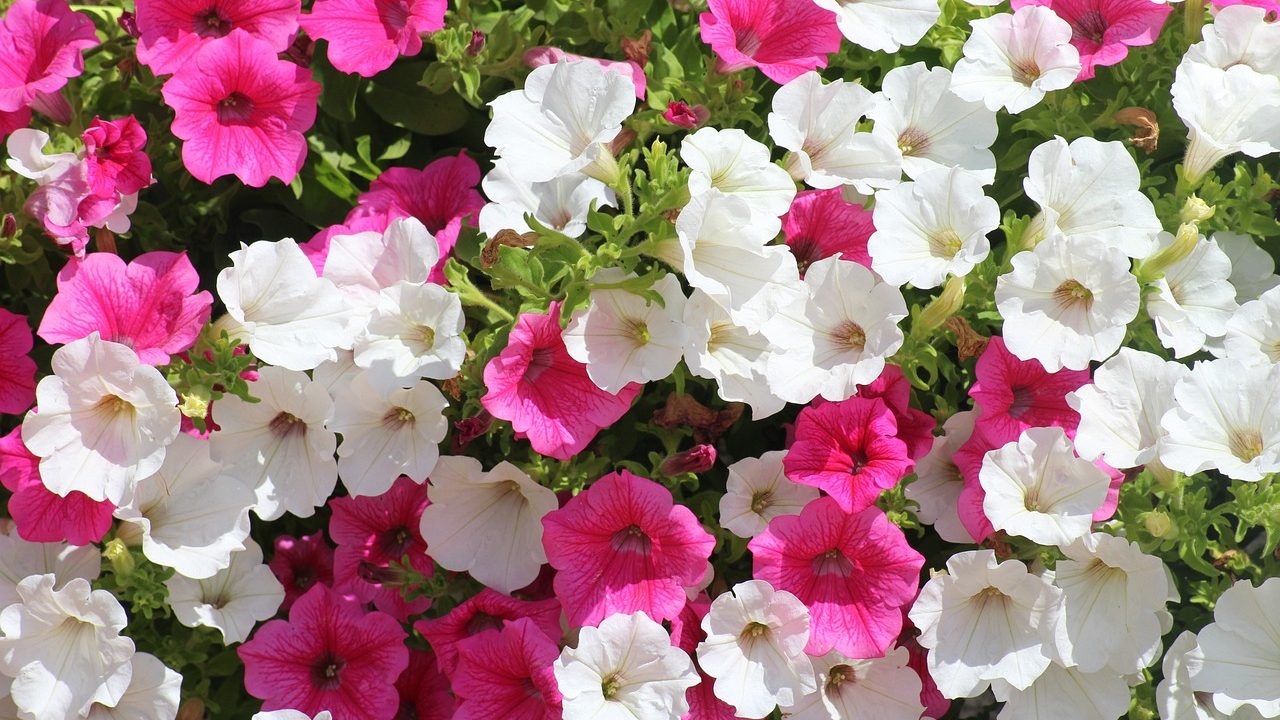
Petunias
Location: Petunias thrive in full sun, needing at least 6 hours of direct sunlight each day. Choose a location with well-drained soil to prevent waterlogging and root rot.
Soil Preparation: Petunias prefer fertile, well-drained soil. Improve the soil by incorporating organic matter such as compost or peat moss to enhance drainage and nutrient content.
Planting Seeds or Transplants: Start petunia seeds indoors 10-12 weeks before the last frost date or purchase young plants from your local nursery. Transplant seedlings outdoors after the danger of frost has passed.
Watering: Water petunias regularly, especially during dry periods, to keep the soil consistently moist but not waterlogged. Deep watering is preferable to ensure the roots are adequately hydrated.
Fertilising: Feed petunias with a balanced fertiliser every 2-3 weeks during the growing season. A slow-release fertiliser can also be mixed into the soil.
Maintenance and Pruning: Deadhead spent flowers regularly to encourage continuous blooming and prevent the plants from becoming leggy. Pinch back the stems occasionally to promote bushier growth and more blooms. Remove any yellowing or diseased foliage to maintain plant health. In late autumn, prune back the plants and remove any debris to prepare for the next growing season.

